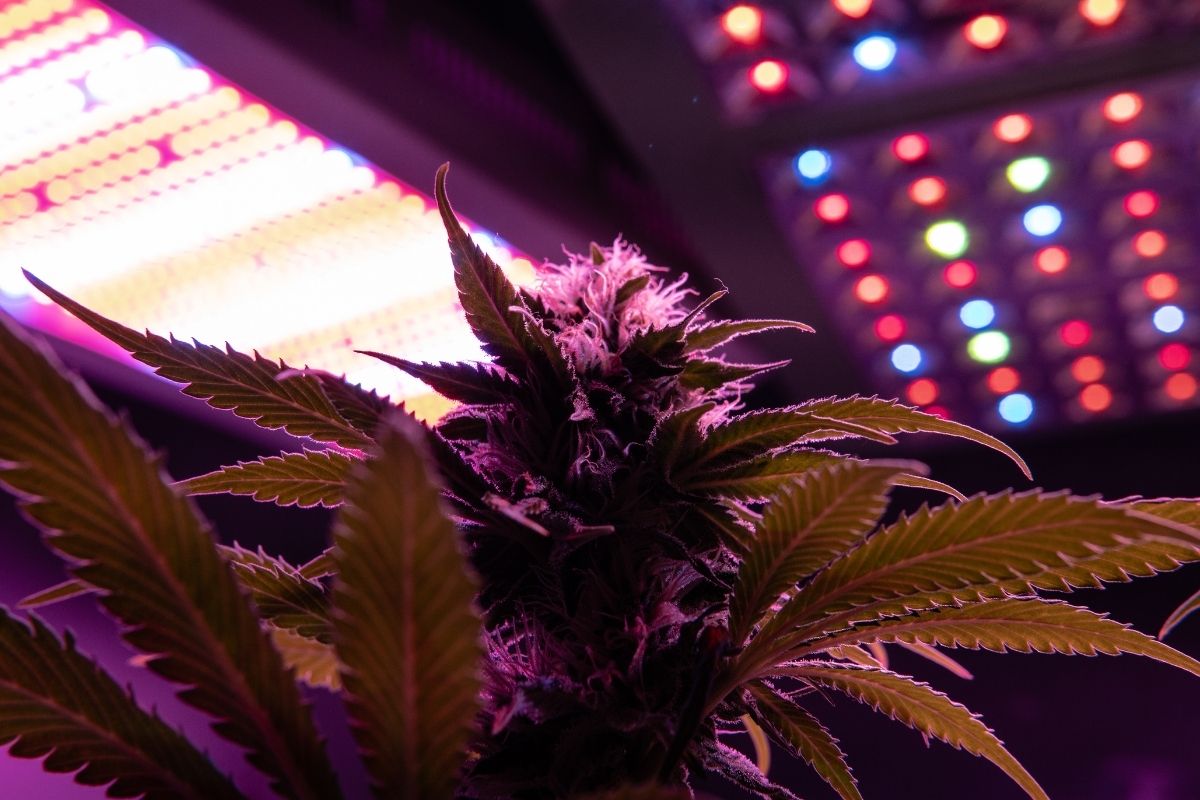If you’ve already started growing marijuana indoors, you know what a difference good quality equipment can make in your yield. But you also know that you can’t simply buy a healthy yield! In this post, learn all about grow tent lighting for your healthiest crop yet, from choosing the right type of grow lights for your tent, figuring out how many you need, and finally how to hang them.
With the right set-up, you get total control over the growing environment for starting seeds or year-round indoor growth. Choosing the right type of grow lights for your tent will help your plants achieve optimal energy conversion and boost their growth at all stages. Keep in mind that proper lighting is as necessary to growing healthy plants as the nutrients and water you provide. Your plants’ lighting requirements rely on two variables:
- Type of plant
- Size of grow tent
It might seem obvious, but even the most expensive grow light won’t guarantee results if you don’t consider these points first. In this guide, we’ll review the ‘how’ behind setting up optimal grow tent lighting for whatever you’re growing.
the size of the tent
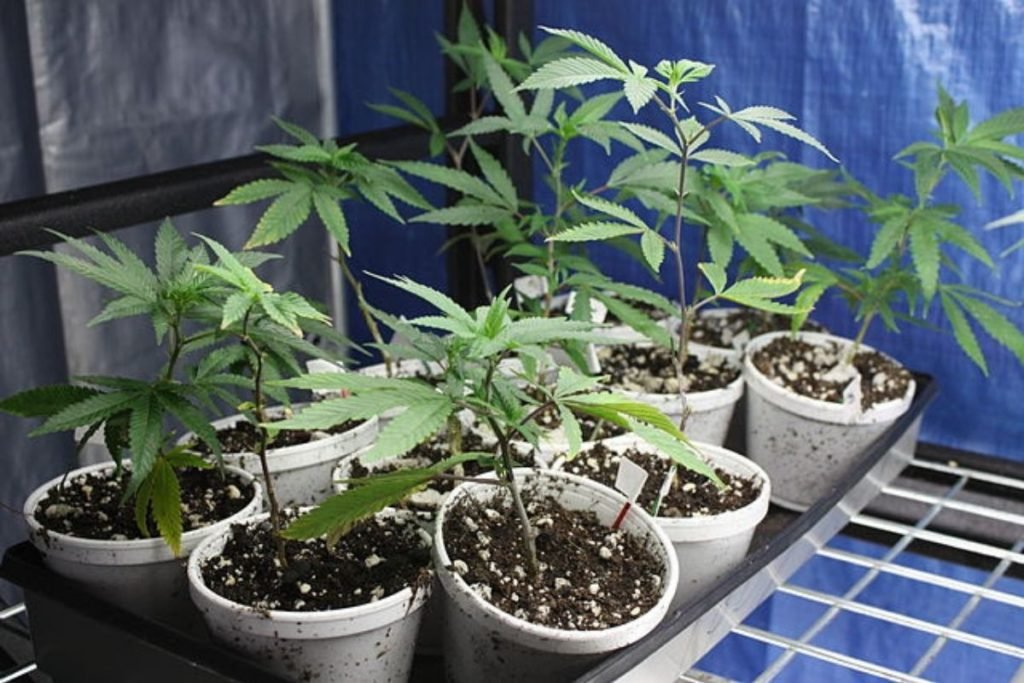
The first thing to consider before choosing to grow lights for your tent is the size of your grow tent. If you have a small tabletop tent, you’ll need a smaller, less intense bulb than one that fills a corner, or the entirety, of a room.
Setting up your small tent with a super strong grow light won’t get you anywhere fast: this common mistake can result in your tent overheating, causing your plants to stress, dehydrate, and possibly sustain leaf burn.
On the other end of the spectrum, lighting a large tent with a weak light will result in slow, anemic growth, root rot, and increased risk for disease.
Whether you have a tent for one, two, or a bunch of pots, or shelves of herbs or seedlings, lights will need to be at a specific height away from the plant for their type and stage of growth. Larger plants need more headspace than seedlings or small plants. The amount of space you have for your grow tent will obviously influence the grow space available for your plants, so it’s a great idea to make efficient use of your tent’s interior with plant shelves or growing rotations to maximize your production.
choosing grow lights for your tent
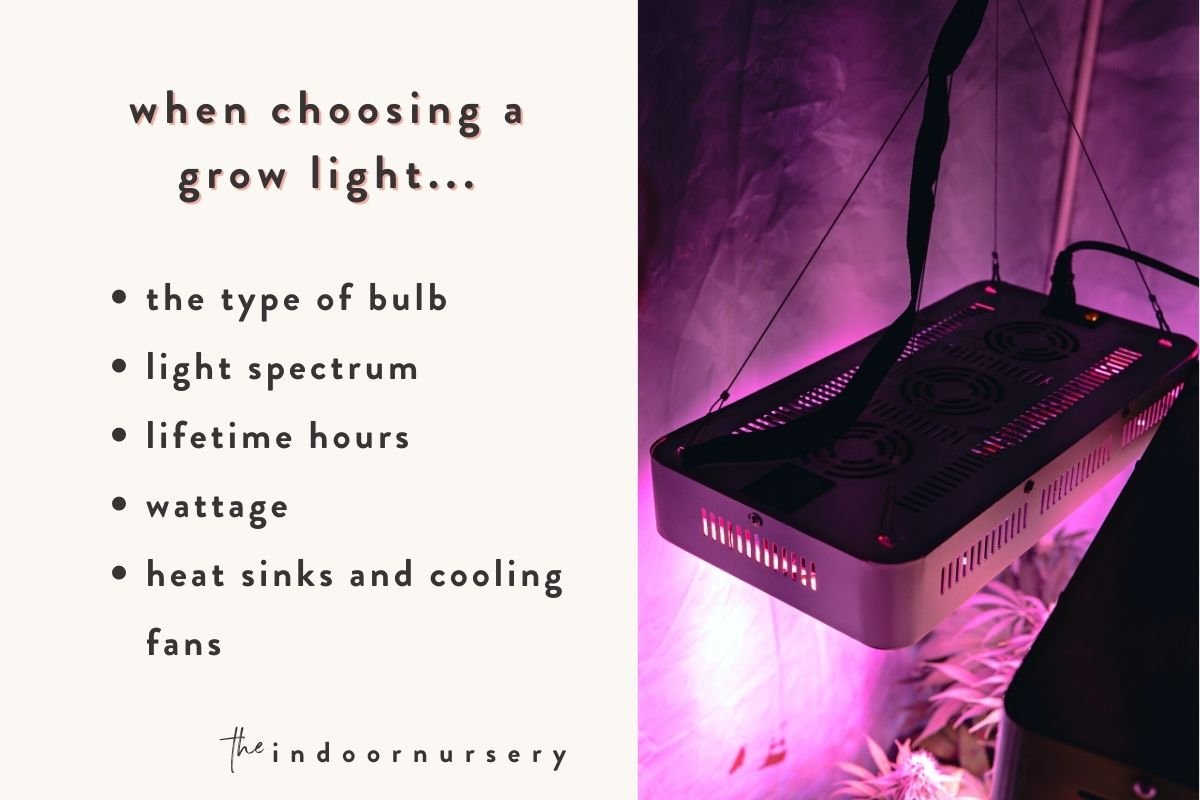
After you’ve decided on the size of the tent you’re buying and how you’ll use the space, it’s time to look at lighting options to suit your setup. A large tent may need one large lighting panel or multiple bulbs or strips to light shelves. Smaller grow tents will take less intense lights that are made for the small space. Some of the factors you should consider when choosing a grow light include:
- The type of bulb. Some types of bulbs, like fluorescent or LED grow lights, give off less heat and provide more energy while pulling less power, while others, like incandescent and HID, give off more heat and are generally best for larger operations. LED and fluorescent grow lights tend to be best for grow tent setups.
- Light spectrum. The light spectrum is important for your plants. If you’re choosing lights for your to grow tent, you will have a choice of red and blue lights for the different growing phases of your plants or a full spectrum option that gives you light from seed to maturity.
- Lifetime hours. This is the total length of time your bulb will last, measured in hours. This number is pretty crucial since you’ll typically have your light on for many hours at a time. Like lighting for our homes, grow light bulbs have a certain amount, usually in the many thousands of hours, or several years, of light to give.
- Wattage. The amount of power your light draws is an important factor in how much your grow setup will cost. Due to the varying strength of bulbs, wattage isn’t a direct indicator of how much energy the light will deliver to your plants. A strong or an inefficient light may draw a high number of watts, while efficient ones can produce more light for fewer watts.
- Heat sinks and cooling fans. Some lights come with built-in heat sinks and cooling fans to keep the bulbs cool and decrease the amount of heat given off by the lamp.
lightbulb intensity
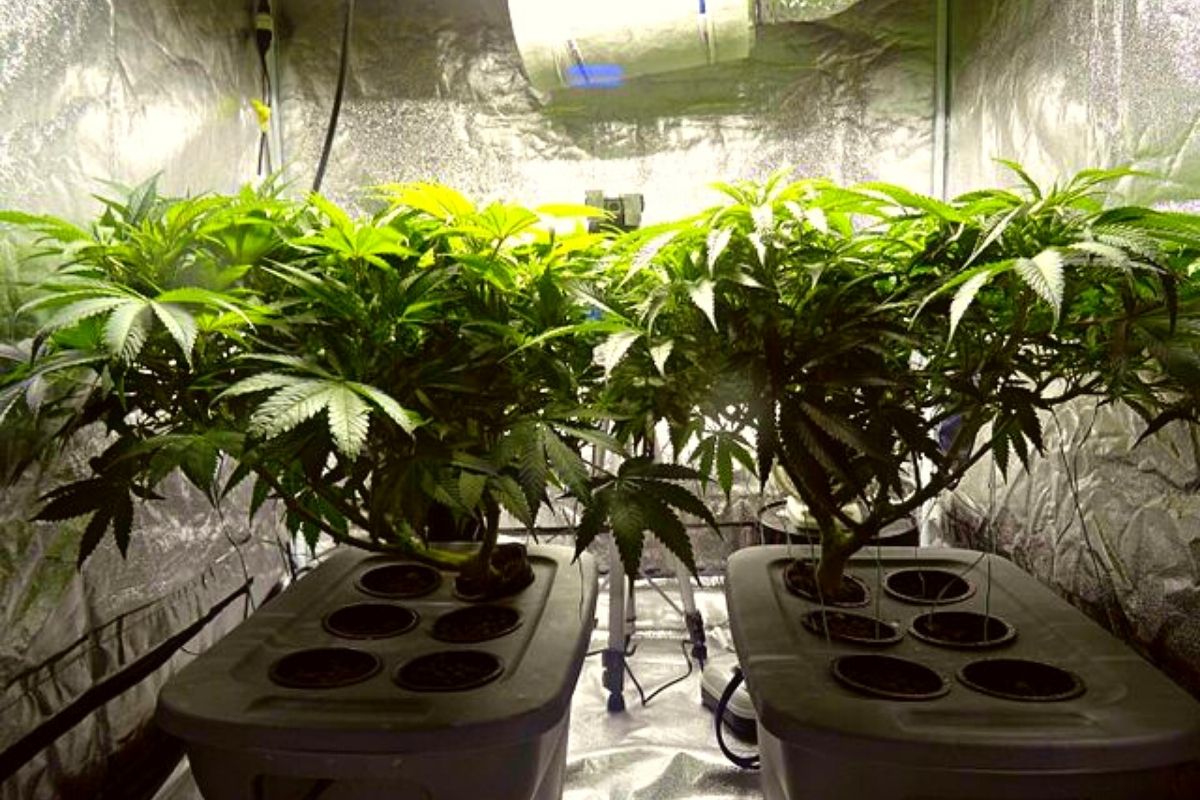
The light intensity affects how much light radiation there is for plants to absorb. When you’re choosing a bulb, wattage is one of the first things you’ll notice listed on its label. This is the power pulled, and not necessarily the amount of light put out. A PAR meter (photosynthetically active radiation, also known as a PPF meter, photosynthetic photon flux) is the most precise measure of exactly how much light is actually reaching in any spot in the tent.
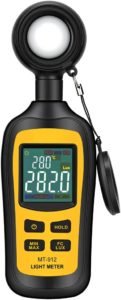
In general, assume that the area directly below the light will receive the most intense light. However, the amount of light your plants receive is also influenced by the following variables:
- The angle of your grow light (wider angles distribute more light sideways)
- How far it is from your plant
- How much light is being lost to secondary sources
Grow tents typically have reflective walls to direct horizontally-directed light to your plants rather than absorbing it, increasing the usable light absorbed by your plants.
Many models of grow lamps come with a dimmer switch, which lets you adjust how much light your plants receive at any given time. This is useful when you’re growing different plants at different stages, or when you rotate different kinds of plants through your tent at different times of the year.
Most manufacturers include an intensity chart for different heights and their radius of reach, but a general rule is that the higher the light, the less intense, and the dimmer the light, the faster that intensity fades as it is further from the plant. Again, a PAR meter is the best way to measure with accuracy how much light is being received at a certain location for your specific arrangement.
number of lights
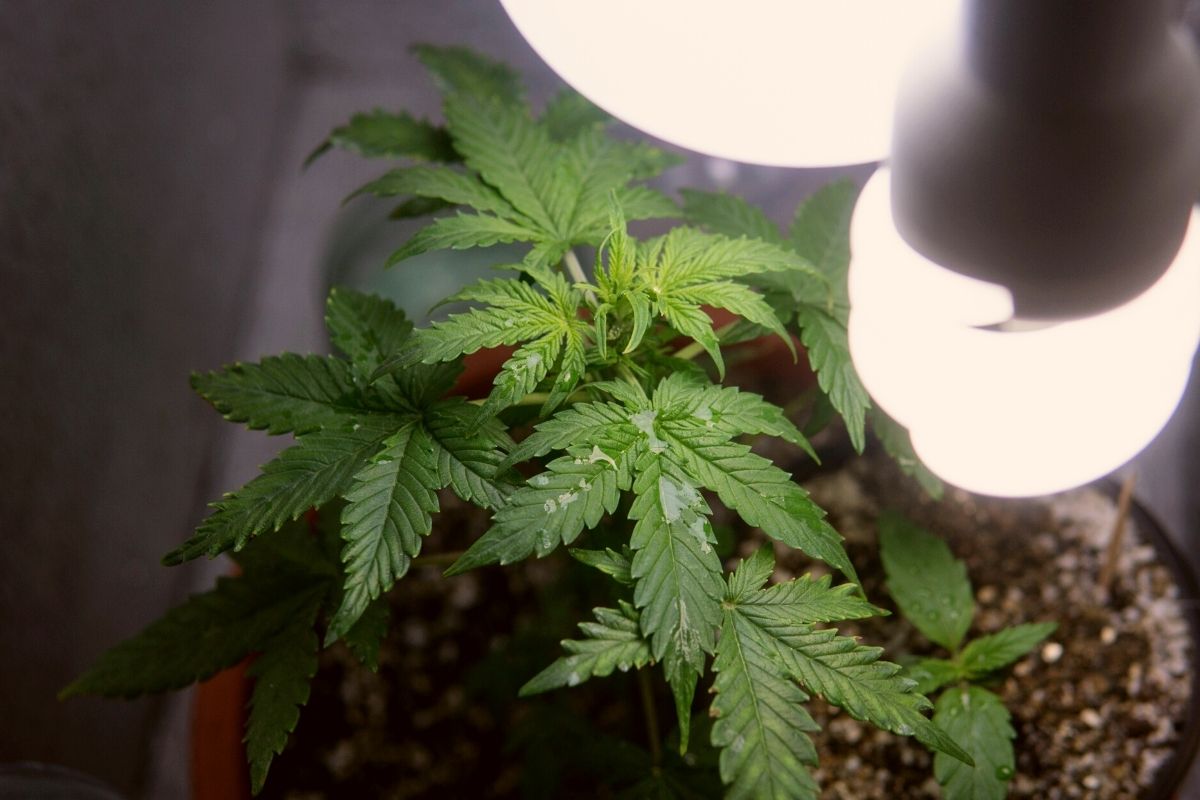
Even light coverage for all plants in your grow tent is important for a successful harvest. To achieve this consistently, you may need multiple bulbs to get full coverage.
Whatever the size of your tent, note that larger tents will generally need more light sources to ensure complete coverage to all plants. Plants directly under light sources in large tents often block light from reaching the corners or lower levels of the space, especially when installed with shelves or racks. One or two light sources typically suffice for small tents, however, where there are fewer options for arranging your plants.
Another reason multiple lights are necessary in larger tents is to maintain the intensity of light on your plants. By installing multiple lights, you’ll overlap the spread of each bulb and increase the amount of light reaching the lower parts of the tent.
setting up grow lights in a tent
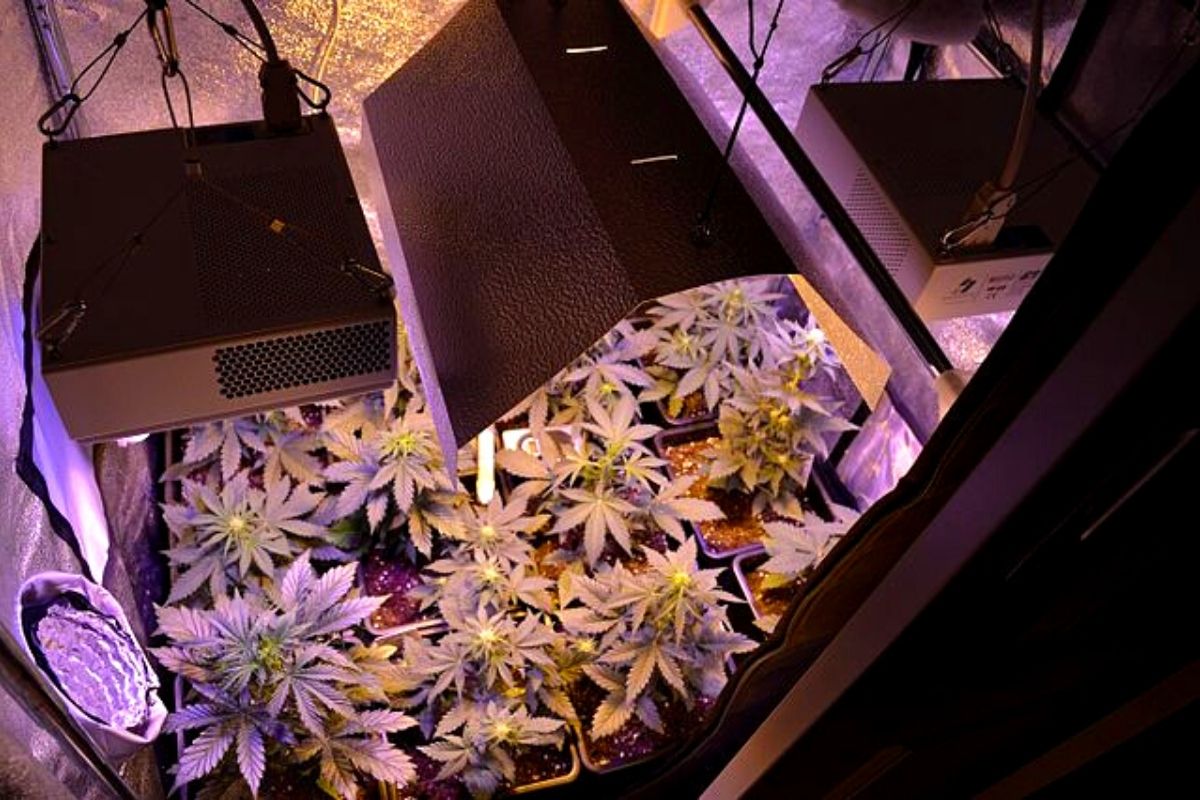
Grow tents are typically designed with straps, hooks and other features that make it easy to install grow lights on the upper frame, along the ceiling of the tent. Your grow light manufacturer should provide installation instructions for the specific model, and more often than not, hardware to hang your light as well. The installation kit may include wires that attach with hooks or rope ratchets that clip on to the ceiling support. Make sure to allow for some space between the lights and the ceiling to allow airflow and prevent your tent material from overheating.
hanging grow lights
Your lights should come with some kind of hanging hardware suited to their model, and many are able to have ratchet ropes attached to them. Ratchet ropes are adjustable so the lights can be moved up and down as necessary. They also may need to be removed from time to time, to be cleaned or to change a bulb depending on the kind of lighting you have.
The spread, height, and intensity are all affected by how the grow lights are hung in the tent, resulting in the light footprint, or the area that gets adequate coverage. Level positioning of the lights is an important factor in making sure the plants are getting even coverage: if one side is higher than another, it means less intense light is being issued from that part of the lamp than the other side.
how high to hang grow lights
Now for the fun part! How high you hang your grow lights will vary based on the plants you’re growing and their stage of growth. Cannabis needs the most hours of light during its vegetative stage, but higher intensity during its flowering stage. I recommend reading more about the specific needs of weed at each growing stage to understand why.
When plants are seeds, they can tolerate lower intensity light just inches above them, but as they grow, the light needs to be farther away and stronger. Young plants may need just a couple of feet of airspace above them and medium intensity light, while mature plants may need closer to 4 or 6 feet between themselves and higher intensity light. Your PAR meter is your friend here. Use it to take readings on how much usable light your plants are receiving before you make adjustments.
For example, cannabis plant seedlings need just 100 to 150 ppfd (the amount of photosynthetically available light read by the PAR meter) for them to sprout, but their mature vegetative state needs between 300 and 500 ppfd, and their flowering stage needs higher intensity light, at 600ppfd or more. As the plant grows, the light will need to be both raised in height and in intensity, an important balance to strike for the most successful producers.
FAQ
should I wear sunglasses in my grow tent?
The light in a grow tent can be very bright, especially in the reflective interiors of large ones. Like any intense lighting, too much isn’t good! Bright light is great for plants, but it can burn your eyes – and even blind you if you’re using industrial strength grow lights. You can choose to turn your grow lights off when you work in your tent, lower the lighting setting, or yes – wear sunglasses. Just make sure they’re specifically designed to block out full spectrum light (most sunglasses don’t).
why aren’t my plants growing fast even though I bought a high wattage light?
If your plants are growing slower than normal, are small, or have stopped growing completely after you installed new, high wattage bulbs, the bulbs may have been mislabeled. A wattage meter can verify how many watts your bulb is drawing, and a low power draw may be affecting the intensity of the light if it doesn’t match with the number on the label. Reviews are your friend when it comes to selecting brands and models of grow lights!
More about lighting
- How To Use Grow Lights For Indoor Plants
- 5 Best Grow Light Strips For Indoor Plants
- Our *hands on* MARS HYDRO TSW 2000 review (with photos)
- Understanding weed light cycles: Get the most from your harvest
- Indoor plant lighting guide: where to put your plants
- How close should grow lights be to plants?
- Best grow lights for seedlings: how to sprout your seedlings safely
- Guide: full-spectrum light for plants (+grow light spectrum chart)
- 10 best LED grow lights for indoor plants

